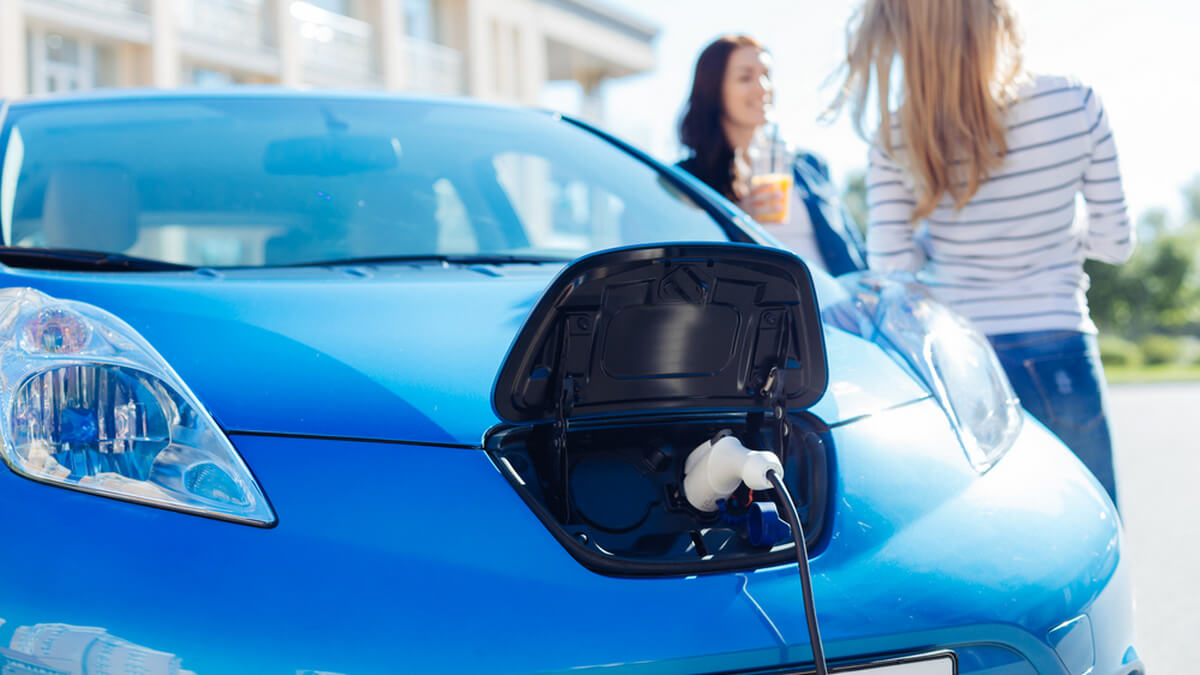
Since 1881 when the first electric car was produced, electrically-powered vehicles have been the future of automotive technology. Beginning in the late 1990s, the electric car saw a renaissance with buyers worldwide. Today's electric vehicles offer the performance and range many drivers expect, and better battery technology means quicker charges and longer lifespan. Many nations plan to outright ban the sale of gasoline-powered vehicles in the near future. Do-It-Yourself owners are learning that maintaining an electric vehicle is not any more difficult than a traditional car.
 Electric cars were first built in the 1880s and look more like carriages than cars. These early electric cars were steered with a tiller and could be driven in either direction with the flip of a switch.
Electric cars were first built in the 1880s and look more like carriages than cars. These early electric cars were steered with a tiller and could be driven in either direction with the flip of a switch.How Does Electric Car Battery Charging Work?
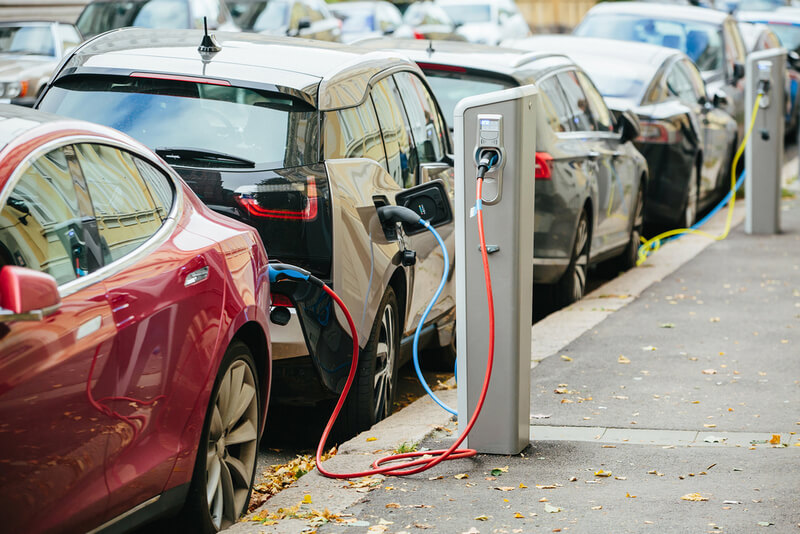 Electric charging stations are becoming more common in the US and Europe. Malls and business parks are common places electric car owners will find publicly accessible charging stations.
Electric charging stations are becoming more common in the US and Europe. Malls and business parks are common places electric car owners will find publicly accessible charging stations.Electric cars provide propulsion using battery packs rather than gasoline. In the past, batteries were the largest deterrent to a functional electric car. In the last 30 years, significant strides have been made to extend the range of batteries while reducing size, weight, and cost. Electric car batteries must be recharged because they cannot recharge themselves since they are exempt from a charging system like gasoline cars. Electric car battery charging stations, like gas stations for electric cars, are becoming common in many places people drive and park, like shopping malls and business parks.
The Range of an Electric Car Battery
When the General Motors EV-1 was introduced in 1996, it was one of the only full-electric cars on the road. It's lead-acid batteries provided a range of 60 miles. But, technology takes trial and time, and the much-loved EV1 helped usher in the future of the automobile.
In the twenty-three years since the EV1 hit the road, battery technology has grown by leaps and bounds. A 2019 Tesla Model S is capable of 370 miles on a single charge and is noted by Kelley Blue Book as the longest-range EV currently available. Tesla Supercharge stations can also recharge batteries in less than an hour and a half from empty. These stations only work with Tesla vehicles, though.
New battery technology using lithium-ion batteries and lightning fast-charging technology promises to improve range in the near future. Numerous companies have introduced electric cars, and the prices have dropped significantly. Many electric cars are similarly priced to gasoline versions these days.
The Best Things About Electric Cars
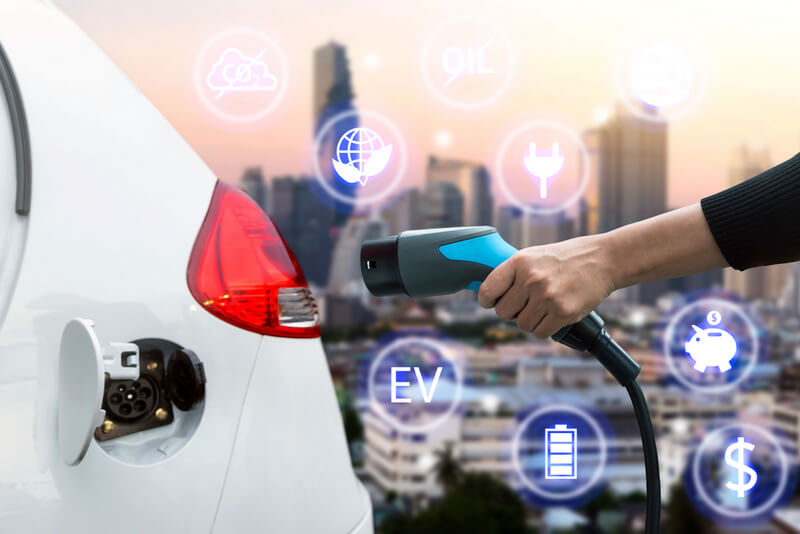 Choosing an electric car over a gasoline-powered vehicle involves a lot of consideration. Electric cars can be more environmentally friendly and more cost-efficient, but take time to recharge and can have a limited range in some driving conditions.
Choosing an electric car over a gasoline-powered vehicle involves a lot of consideration. Electric cars can be more environmentally friendly and more cost-efficient, but take time to recharge and can have a limited range in some driving conditions.The most significant benefit of driving an electric car is the reduction in emissions. The U.S. Department of Energy states that electric vehicles, or EVs, produce zero tailpipe emissions. The Department cautions that EV emissions overall are dependent on the source of electricity. Places that have clean energy, such as Norway that uses hydroelectric dams, allow for significantly lower emissions. Other parts of the world, like the American South-East which relies on coal-fired electricity production, won't have as drastic of a reduction in overall emissions.
Electric cars require less maintenance than gasoline-powered cars. The American Automobile Association reports that the average American spent $766 per year on maintaining a car in 2016. A significant portion of this cost is due to oil changes. A DIYer often spends $50 or more on an oil change and should do several oil changes each year. It is easy to see how simply changing oil could cost $250 or more each year.
If noisy cars bother you, an electric car might be the right choice. Electric motors produce almost no sound, which leads to a near-silent driving experience. There is also no nasty smell when charging an electric car battery like when filling a gas tank.
Today's electric vehicles are exhibiting rare performance numbers, too. Unlike gasoline engines that must build horsepower and torque through the RPM range, electric motors produce 100% torque immediately. This means an electric car can accelerate much quicker than most gasoline-powered cars. An electric car's ability to accelerate quickly is based on the battery, not the motor.
The Worst Things About Electric Cars
Above all potential problems involved with owning an electric vehicle is the need to charge the battery. Today's newest electric vehicles incorporate better charging speeds and longer range than the older electric vehicles. Many of the best electric vehicles today can quick charge enough to get you home in a matter of minutes.
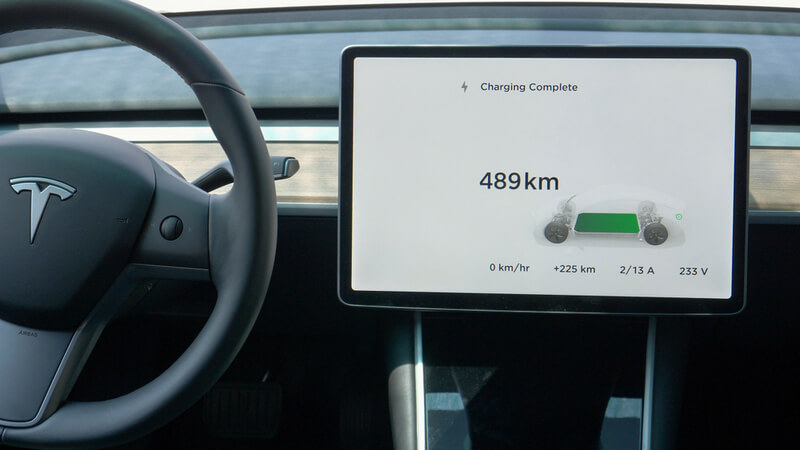 Today's electric cars get better range than previous generations. New battery developments allow for more powerful batteries without the heat and the weight of older designs has also lead to the development of fast-charging capabilities.
Today's electric cars get better range than previous generations. New battery developments allow for more powerful batteries without the heat and the weight of older designs has also lead to the development of fast-charging capabilities.As with a high-performance gasoline-powered car, the harder you drive, the faster you hit empty even in an electric vehicle. Drivers tackling twisty mountain roads will see the range of an electric vehicle drop dramatically. This is where the need to recharge can become problematic. A depleted battery with no charging station will result in a call to the local towing company.
Electric car buyers should also consider the cost of battery replacement. It is estimated by the National Renewable Energy Laboratory that today's electric batteries could last as long as 15 years under normal conditions. Drivers of electric cars in extremely hot or cold climates should get eight to ten years of reliable recharging. Battery replacement costs range from $1,400 and up depending on the type of electric vehicle.
Maintaining the electric motors and various components of an electric car is not any more or less difficult than a traditional car. The most difficult aspect is that the average DIYer has little experience with the unfamiliar electric vehicle components. A top-quality electric vehicle repair manual will help the DIYer learn the differences.
Rebates, Credits, and Incentives
In the United States, the Internal Revenue Service provides a rebate for the purchase of a new electric vehicle. The rebate provides up to $7,500 to encourage electric vehicle sales. Numerous states also provide tax credits and rebates for electric vehicle owners. A great resource to see the best benefit available in your area for the purchase of an electric vehicle is the U.S. Department of Energy website. Rebates, credits, and other incentives are searchable by state.
 Many incentives and rebates are available from the federal and state government, and benefits unique to electric car owners can help to offset the cost difference between electric and gasoline cars. Many nations are pushing to ban the sale of gasoline-powered vehicles in the near future.
Many incentives and rebates are available from the federal and state government, and benefits unique to electric car owners can help to offset the cost difference between electric and gasoline cars. Many nations are pushing to ban the sale of gasoline-powered vehicles in the near future.In addition to the various credits, some manufacturers offer additional benefits. Tesla offers owners who refer someone to purchase a Tesla up to 1,000 miles of free Supercharging.
Typically, electric cars are charged at home. The cost of electricity varies by region, and the increase in electricity bills can be a significant mark against the practicality of an electric car. An electric car requires special wiring that should be professionally installed. Several electric vehicle manufacturing companies offer home charging stations. Some consumers may even qualify for rebates from their electric provider to partially offset the cost of charging electric vehicles.
Working on EVs at Home
 Electric vehicles require much of the same maintenance as other cars, but won't require oil changes. Brakes, suspension parts, and steering components are all familiar and should be easy for the home mechanic to maintain with a quality repair manual.
Electric vehicles require much of the same maintenance as other cars, but won't require oil changes. Brakes, suspension parts, and steering components are all familiar and should be easy for the home mechanic to maintain with a quality repair manual.Tinkerers fear not! EVs offer plenty of opportunities for at-home repairs. Today's sophisticated systems rely on the same brakes, suspensions, and steering systems in more familiar vehicles. Some electric cars require frequent brake changes. The weight of the battery packs often impacts the longevity of some suspension components.
Many of the systems of a modern electric car seem challenging and difficult to work on. With some tasks, that is undoubtedly true. Learning how to keep the newest electric cars performing at their peak will be valuable knowledge for the DIYer in the future.
High-quality repair manuals for your electric car are a great starting place to familiarize the names of the components and how they function. Most EVs use sophisticated computers, but many scan tools are available to aid in communicating with the car's computers. Tesla vehicles can make software updates themselves.
Special Tools for EVs
 Many tools are specialized for working on electric cars. Most vehicles will have diagnostic programming built-in, but a selection of high-quality tools should be in the DIYers toolbox. A good multimeter is an essential tool for working on electric cars.
Many tools are specialized for working on electric cars. Most vehicles will have diagnostic programming built-in, but a selection of high-quality tools should be in the DIYers toolbox. A good multimeter is an essential tool for working on electric cars.High-voltage electric cars require the DIYer to have a selection of vehicle-specific tools. Any time a technician is working on an electric car, they should use appropriate wrenches and other tools that are designed to provide electric shock prevention. Usually, manufacturers accomplish this with the use of insulated tools. High-quality voltage and multimeter testers are an essential tool for tracking down electrical gremlins. Tesla vehicles now can diagnose problems and can even order repair parts on their own.
Is an Electric Car in Your Future?
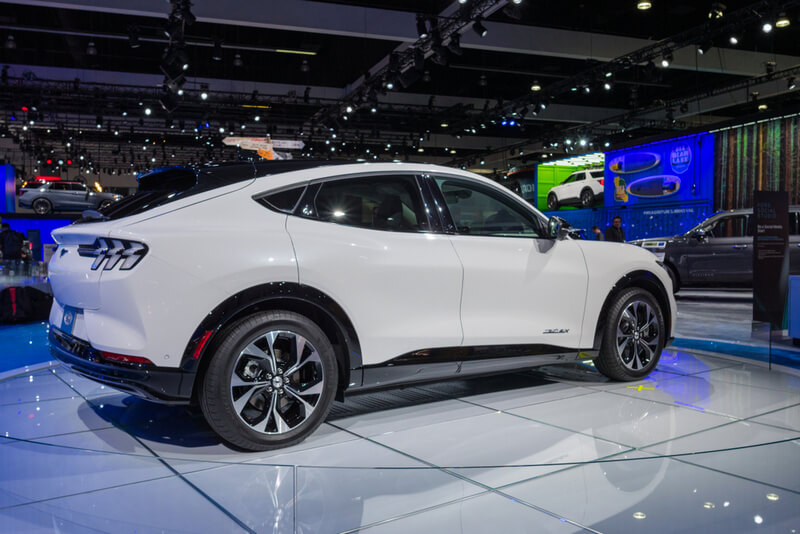
Is this the Mustang of the future? We won't know for sure, but the Ford Mustang Mach E promises to be a popular option for electric car buyers soon. The average American driver covers about 13,476 per year according to data from the U.S. Department of Transportation. The average U.S. worker is at work 261 days per year. The average driver would need a daily range of about 56 miles if those miles were only driving to-and-from work. Today's electric vehicles are certainly capable of that figure, even if the buyer is looking at a less efficient vehicle.
Factoring the cost of gasoline, miles driven per year, and the amount of money it costs to maintain a gasoline-powered vehicle can give buyers an idea of the costs they incur. Estimating the cost of electricity to charge an electric car battery can be difficult due to regional differences in prices, but most consumers should find out the rate of electricity in their area, typically represented as cost per Kilowatt Hour (kWh). The U.S. Department of Energy estimates that an average home charging system handling a single electric car for a 70-mile range charge will cost about $2.40, much less than 70 miles worth of gasoline, even in the most fuel-efficient car.
Interested buyers should consider the pros and cons before investing in an electric car. As the technology to build and charge electric vehicles becomes more wide-spread, costs will drop, and the future of the electric car looks bright.
Find an electric car repair manual here.
